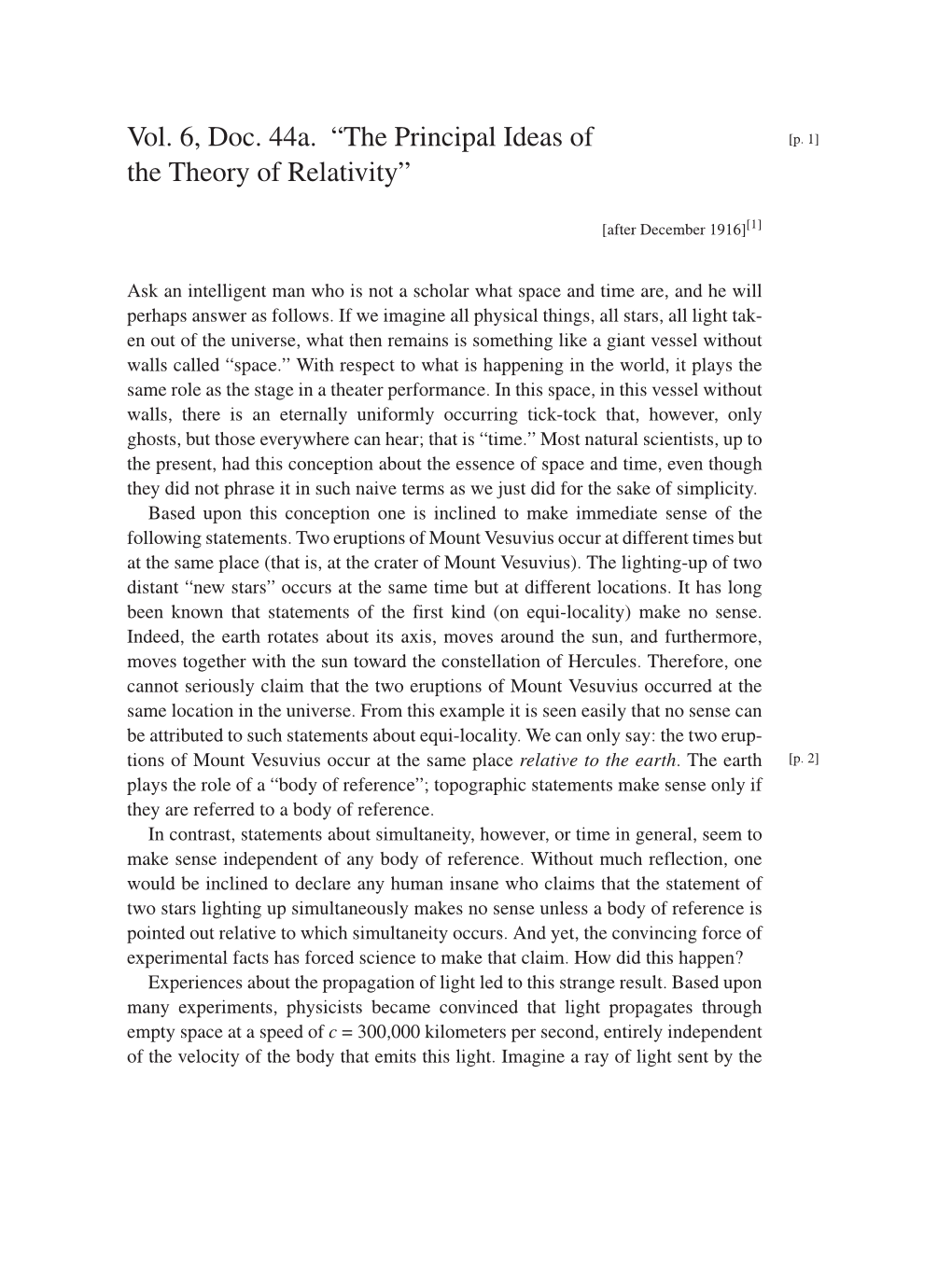D O C . 4 4 a P R I N C I P A L I D E A S O F R E L A T I V I T Y 3
Vol. 6, Doc. 44a. “The Principal Ideas of
the Theory of Relativity”
[after December
1916][1]
Ask an intelligent man who is not a scholar what space and time are, and he will
perhaps answer as follows. If we imagine all physical things, all stars, all light tak-
en out of the universe, what then remains is something like a giant vessel without
walls called “space.” With respect to what is happening in the world, it plays the
same role as the stage in a theater performance. In this space, in this vessel without
walls, there is an eternally uniformly occurring tick-tock that, however, only
ghosts, but those everywhere can hear; that is “time.” Most natural scientists, up to
the present, had this conception about the essence of space and time, even though
they did not phrase it in such naive terms as we just did for the sake of simplicity.
Based upon this conception one is inclined to make immediate sense of the
following statements. Two eruptions of Mount Vesuvius occur at different times but
at the same place (that is, at the crater of Mount Vesuvius). The lighting-up of two
distant “new stars” occurs at the same time but at different locations. It has long
been known that statements of the first kind (on equi-locality) make no sense.
Indeed, the earth rotates about its axis, moves around the sun, and furthermore,
moves together with the sun toward the constellation of Hercules. Therefore, one
cannot seriously claim that the two eruptions of Mount Vesuvius occurred at the
same location in the universe. From this example it is seen easily that no sense can
be attributed to such statements about equi-locality. We can only say: the two erup-
tions of Mount Vesuvius occur at the same place relative to the earth. The earth
plays the role of a “body of reference”; topographic statements make sense only if
they are referred to a body of reference.
In contrast, statements about simultaneity, however, or time in general, seem to
make sense independent of any body of reference. Without much reflection, one
would be inclined to declare any human insane who claims that the statement of
two stars lighting up simultaneously makes no sense unless a body of reference is
pointed out relative to which simultaneity occurs. And yet, the convincing force of
experimental facts has forced science to make that claim. How did this happen?
Experiences about the propagation of light led to this strange result. Based upon
many experiments, physicists became convinced that light propagates through
empty space at a speed of c = 300,000 kilometers per second, entirely independent
of the velocity of the body that emits this light. Imagine a ray of light sent by the
[p. 1]
[p. 2]
